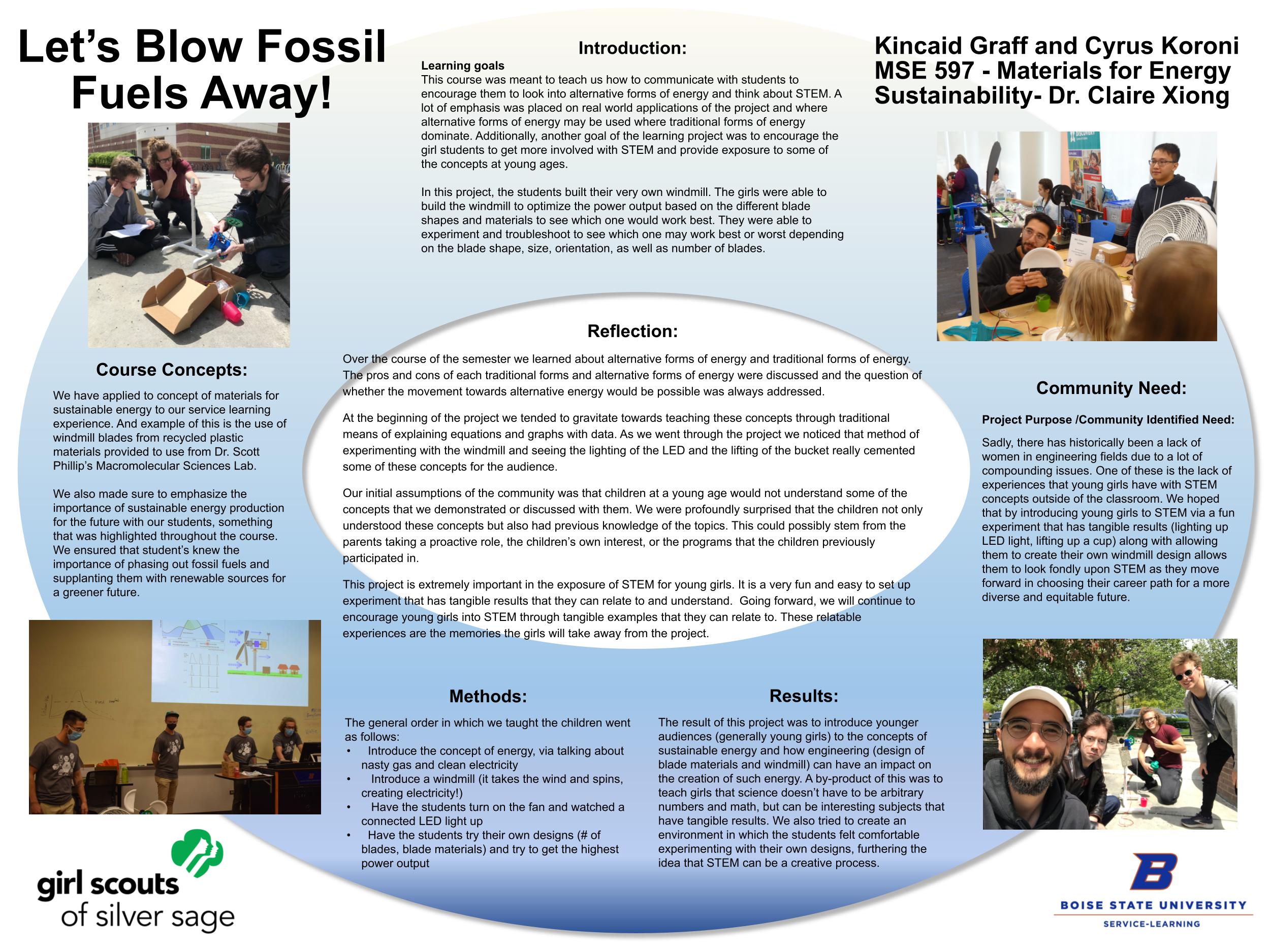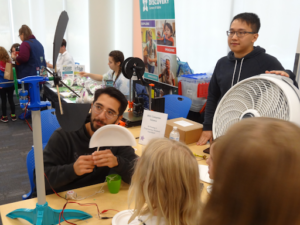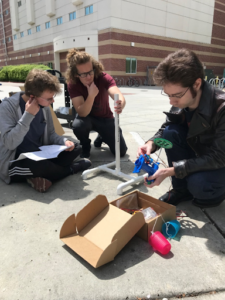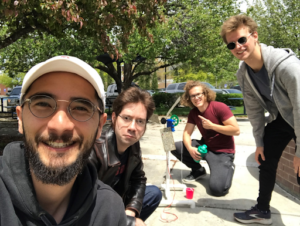Kincaid Graff and Cyrus Koroni
Dr. Claire Xiong – MSE 597
Girl Scouts of Silver Sage

Introduction
Learning Goals
This course was meant to teach us how to communicate with students to encourage them to look into alternative forms of energy and think about STEM. A lot of emphasis was placed on real world applications of the project and where alternative forms of energy may be used where traditional forms of energy dominate. Additionally, another goal of the learning project was to encourage the girl students to get more involved with STEM and provide exposure to some of the concepts at young ages.
In this project, the students built their very own windmill. The girls were able to build the windmill to optimize the power output based on the different blade shapes and materials to see which one would work best. They were able to experiment and troubleshoot to see which one may work best or worst depending on the blade shape, size, orientation, as well as number of blades.
Reflection
Over the course of the semester we learned about alternative forms of energy and traditional forms of energy. The pros and cons of each traditional forms and alternative forms of energy were discussed and the question of whether the movement towards alternative energy would be possible was always addressed.
At the beginning of the project we tended to gravitate towards teaching these concepts through traditional means of explaining equations and graphs with data. As we went through the project we noticed that method of experimenting with the windmill and seeing the lighting of the LED and the lifting of the bucket really cemented some of these concepts for the audience.

Our initial assumptions of the community was that children at a young age would not understand some of the concepts that we demonstrated or discussed with them. We were profoundly surprised that the children not only understood these concepts but also had previous knowledge of the topics. This could possibly stem from the parents taking a proactive role, the children’s own interest, or the programs that the children previously participated in.
This project is extremely important in the exposure of STEM for young girls. It is a very fun and easy to set up experiment that has tangible results that they can relate to and understand. Going forward, we will continue to encourage young girls into STEM through tangible examples that they can relate to. These relatable experiences are the memories the girls will take away from the project.

Community Partner: Girl Scouts of Silver Sage
Project Purpose /Community Identified Need:
Sadly, there has historically been a lack of women in engineering fields due to a lot of compounding issues. One of these is the lack of experiences that young girls have with STEM concepts outside of the classroom. We hoped that by introducing young girls to STEM via a fun experiment that has tangible results (lighting up LED light, lifting up a cup) along with allowing them to create their own windmill design allows them to look fondly upon STEM as they move forward in choosing their career path for a stronger future.
Course Concepts
We have applied to concept of materials for sustainable energy to our service learning experience. And example of this is the use of windmill blades from recycled plastic materials provided to use from Dr. Scott Phillip’s Macromolecular Sciences Lab.
We also made sure to emphasize the importance of sustainable energy production for the future with our students, something that was highlighted throughout the course. We ensured that student’s knew the importance of phasing out fossil fuels and supplanting them with renewable sources for a greener future.

Methods
The general order in which we taught the children went as follows:
- Introduce the concept of energy, via talking about nasty gas and clean electricity
- Introduce a windmill (it takes the wind and spins, creating electricity!)
- Have the students turn on the fan and watched a connected LED light up
- Have the students try their own designs (# of blades, blade materials) and try to get the highest power output
Results
The result of this project was to introduce younger audiences (generally young girls) to the concepts of sustainable energy and how engineering (design of blade materials and windmill) can have an impact on the creation of such energy. A by-product of this was to teach girls that science doesn’t have to be arbitrary numbers and math, but can be interesting subjects that have tangible results. We also tried to create an environment in which the students felt comfortable experimenting with their own designs, furthering the idea that STEM can be a creative process.
